
T&I News 14 2018…
A good deal of news from the machine shop this week… The Dandy coach is also progressing well, with varnishing and cosmetic detailing underway whilst we wait on the delivery of American oak for the floor and running boards/steps. The recent Dig For Victory event is a reminder that we are also well into our busy events programme, and readers will not be surprised to hear that the 2019 Great North Steam Fair planning is well advanced. We have a theme, and this will be revealed once we have determined that some key supporting exhibits are available for the event – which will move on from First World War themes (though, of course, still include a degree of content in terms of vehicles from the conflict).
Apprentices at work
Our apprentices have been busy working with us during the summer holiday (they have now returned to college). A great deal of work was accomplished with them here and their value to the organisation is already paying off…
Below: A large number of brackets for the gallopers have been machined (the gallopers reconstruction still being underway in various areas and with a number of contractors).
Below: Chris (nearest camera), Dan and Zoe (our apprentices in the engineering side) all at work in the machine shop. Three machines running and a great deal of productivity to see! Chris was machining the clack valves for Wissington (including valve seats internally), Dan is making brackets for the many terms of carriage signs we are to install around the tramway and bus stops, whilst Zoe was machining new bearings for Gateshead tram 10’s controllers (see below).
Below: The apprentices were also taken to Lanes’ foundry to deliver some patterns, and be inducted into the moulding and casting business…
Below: Whilst progress on Gateshead tram 10 has appeared slow, the tram group have been progressing work on some components currently removed from the tram. The compressor has been dismantled and had its motor armature skimmed and undercut in house (see earlier post). The compressor motor has also had the armature bearings whitemetalled and bored. These have now been refitted and reassembly of the compressor has begun.
The controllers have received attention too, with the barrels receiving new segments as required. An issue found was that the lower barrel bearings were worn to the extent that the controller fingers were pushing the barrel back in the casing, meaning it was not possible to correctly set the finger depths. These bearings and the lower segment were originally manufactured as one piece.
To correct the issue the barrel was machined to remove the bearing and clean up onto the core shaft of the barrel. Bearings have then been made to fit the controller body and the cleaned up shaft.
Below: 16’s wheelsets are now back from turning. Long term readers will remember that when this tram was overhauled 4 years ago, we did a considerable amount of work on the suspension and associated pendulums to correct various build and wear issues. Little work is needed this time on these items, but there are some small jobs to do on the pendulums to make sure they continue to work correctly.
16’s brake gear is also receiving some attention. All our trams suffer with large amounts of wear on the brake gear pins and linkages. In part this is a design issue, with the pins fee to rotate in both the clevis and the rod, steel pins operating in steel holes and little provision for lubrication. With the high milages the tramcars achieve keeping up with this work is becoming increasingly difficult.
16 will return to service with pins which are a tight fit and held captive in each clevis in the brake linkages. The rod ends will have Oilite bushes fitted which will move on the pins. Oilite is a porous bronze which is impregnated with oil to give the bearing self-lubricating properties.
The pins in the photo have a flat on the head to stop them rotating, the split pin hole is drilled in the correct location, and the washer machined to the correct thickness to prevent the pin from lifting.
RHEC
Below: Tony and team are busy with the Brampton coach. This was assembled outside and subsequently painted (better light) before being rolled inside for the previously made panels to be fitted.
Below: This view gives a sense of what the coach will look like when complete – bear in mind that this was a horse-drawn era vehicle originally. There are still W’ irons, step brackets and steps to fit, as well as the brake gear modifications and relocation of the brake column to complete. Lining and lettering will finish the job – so still quite some way to go!
Below: Formica W Irons have been made and will be backed by steel brackets to support the lower step, along with the more ornamental outer brackets. Largely cosmetic, there is no need for them to have the strength of steel, but at half an inch thick, they look the part and won’t rust!
Dig For Victory
Below: The Second World War era vehicle content at this event is growing with each year that passes, and last week’s event enabled a respectably sized military camp to be created, with the vehicles also venturing around the museum, much in the way they do for the steam fair. Colin Slater send some photos taken at the weekend to give readers a flavour of some of the exhibits seen. There is also footage on the Museum’s Facebook page.





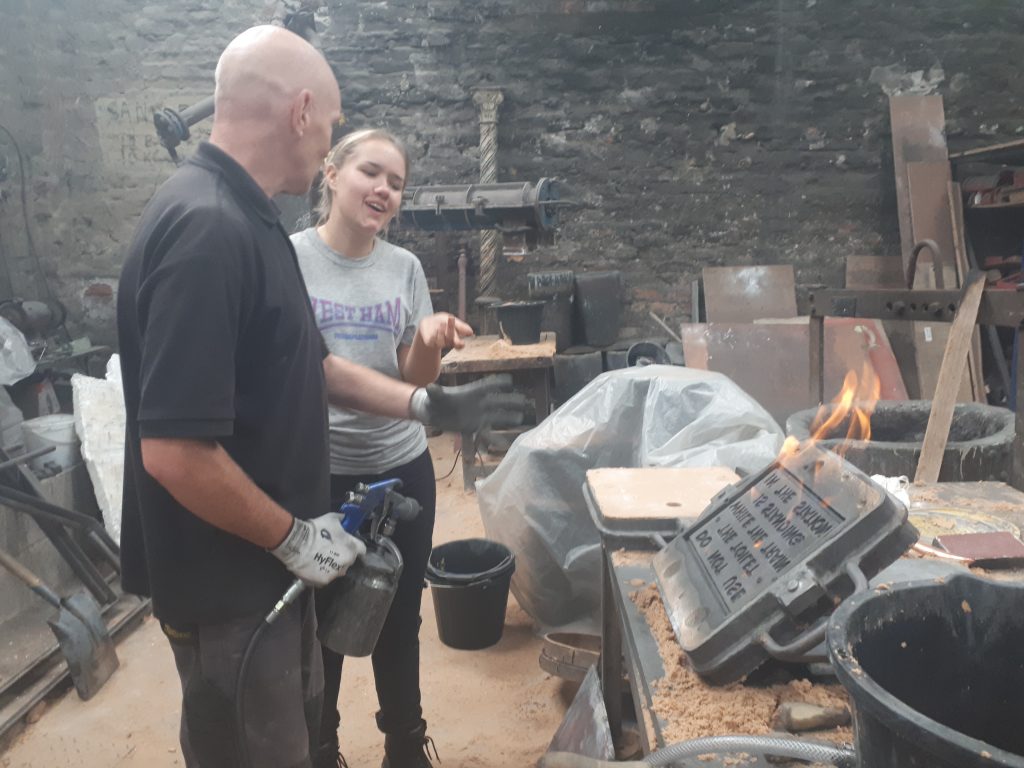





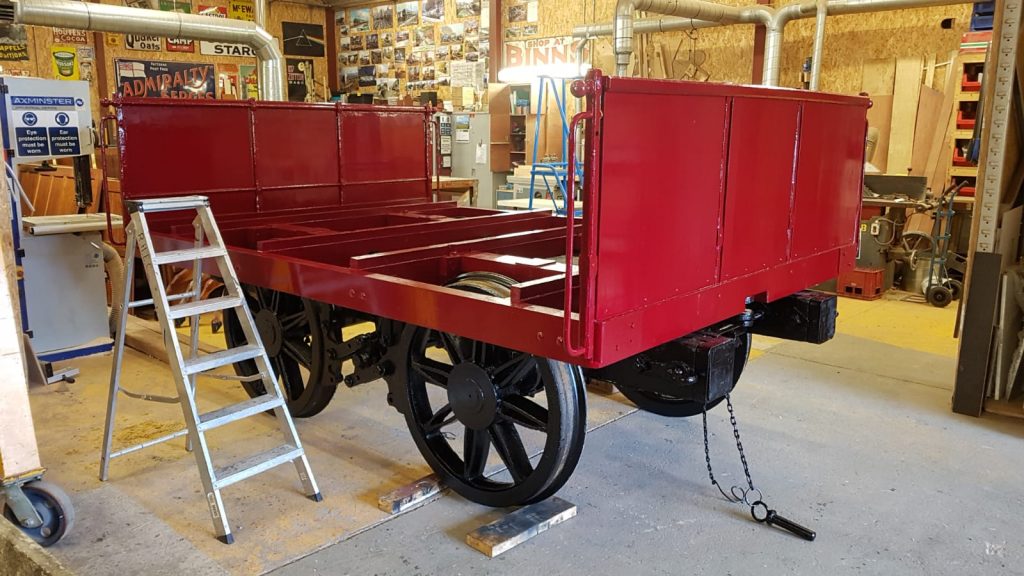
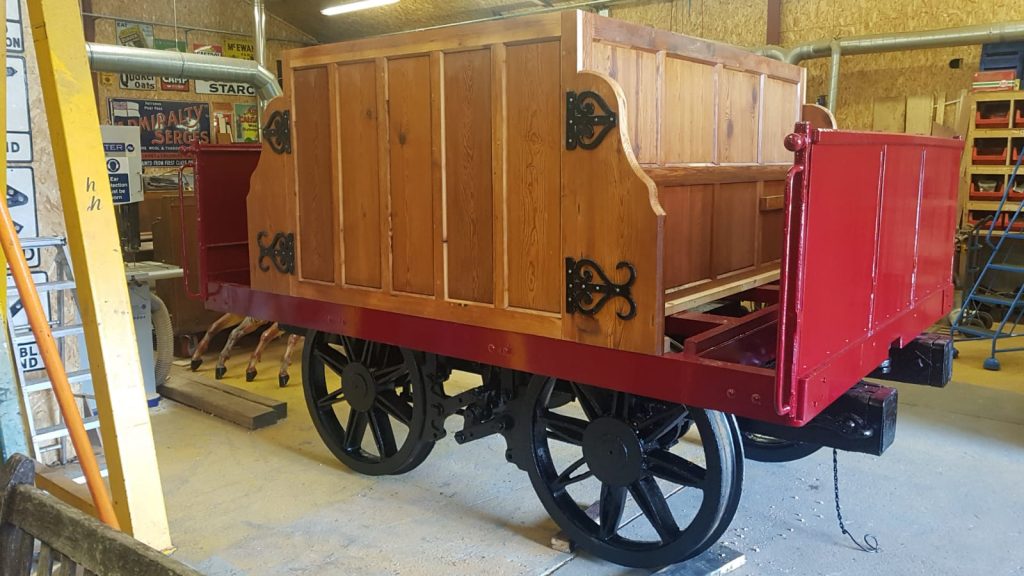
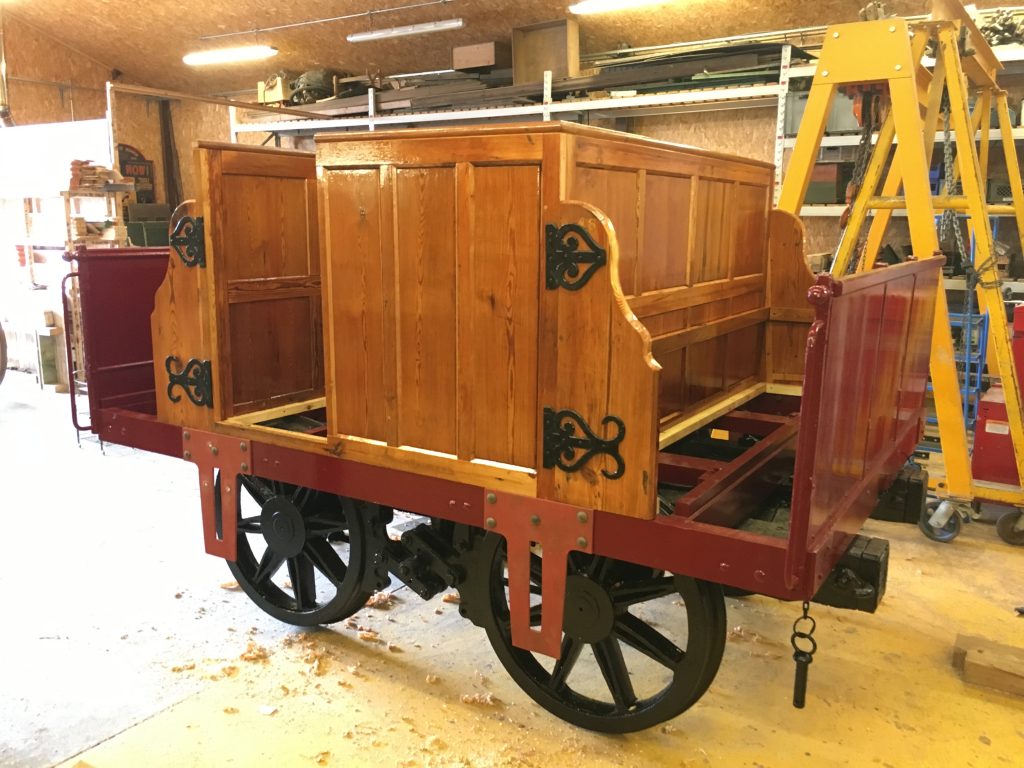

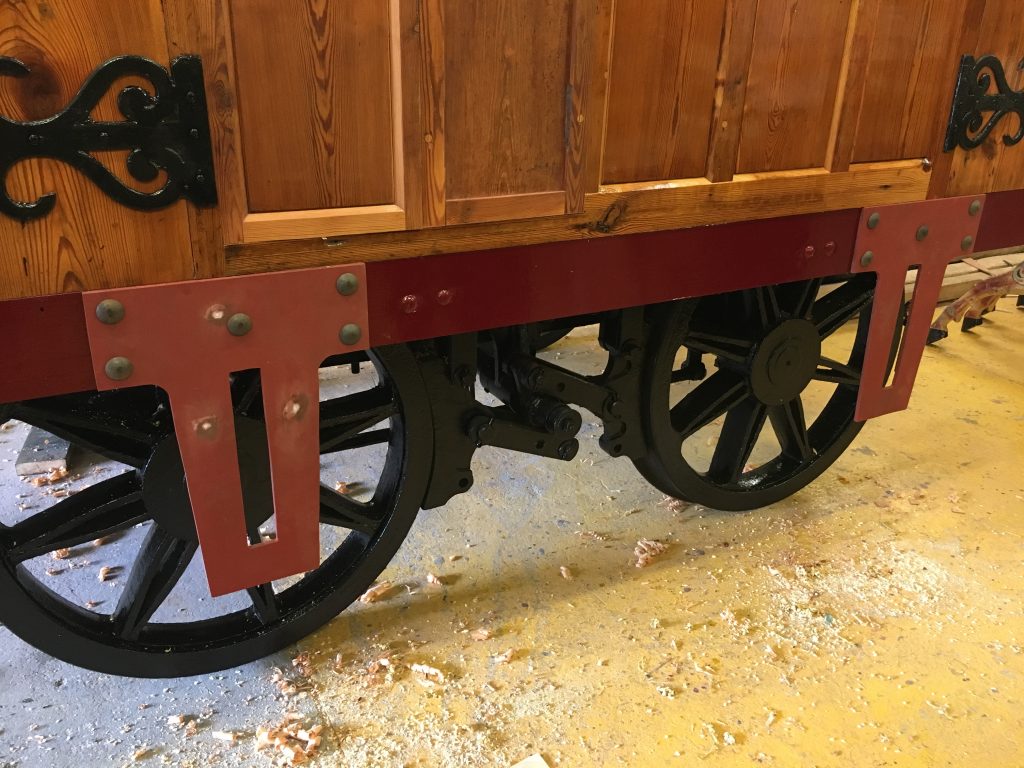

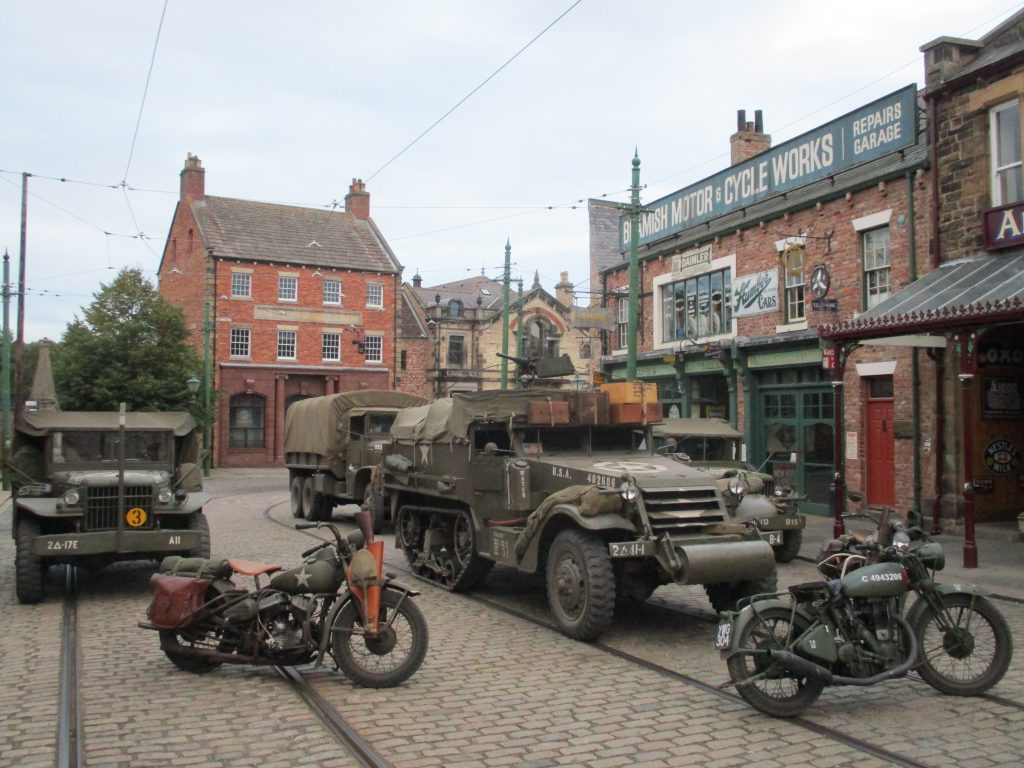
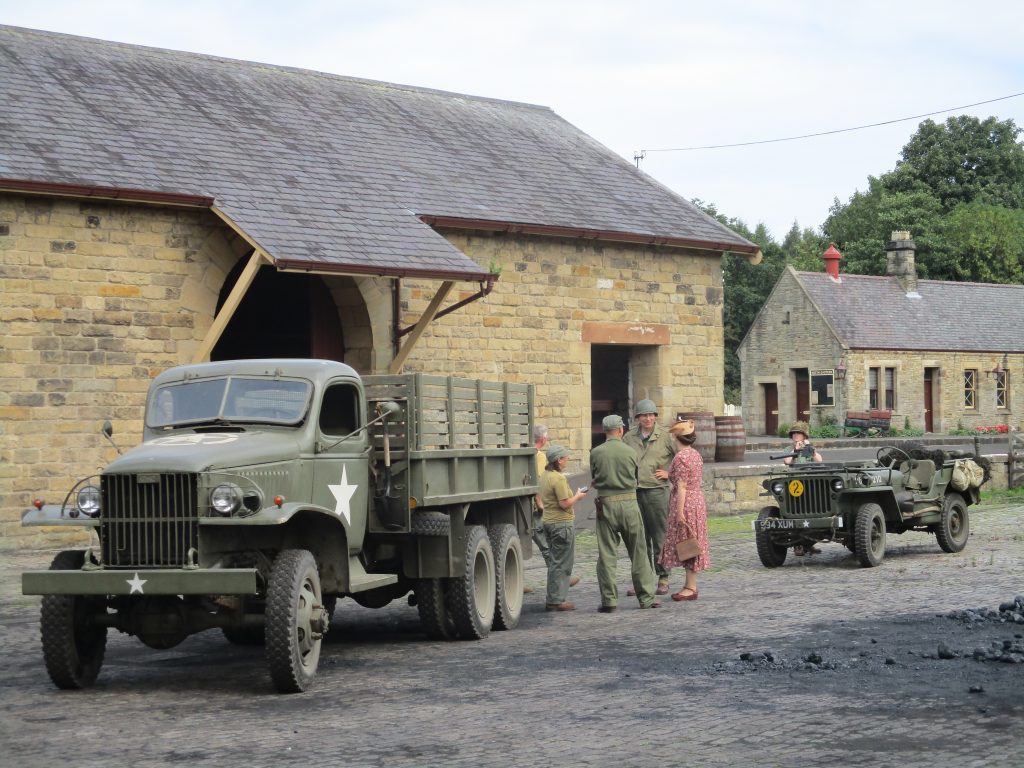
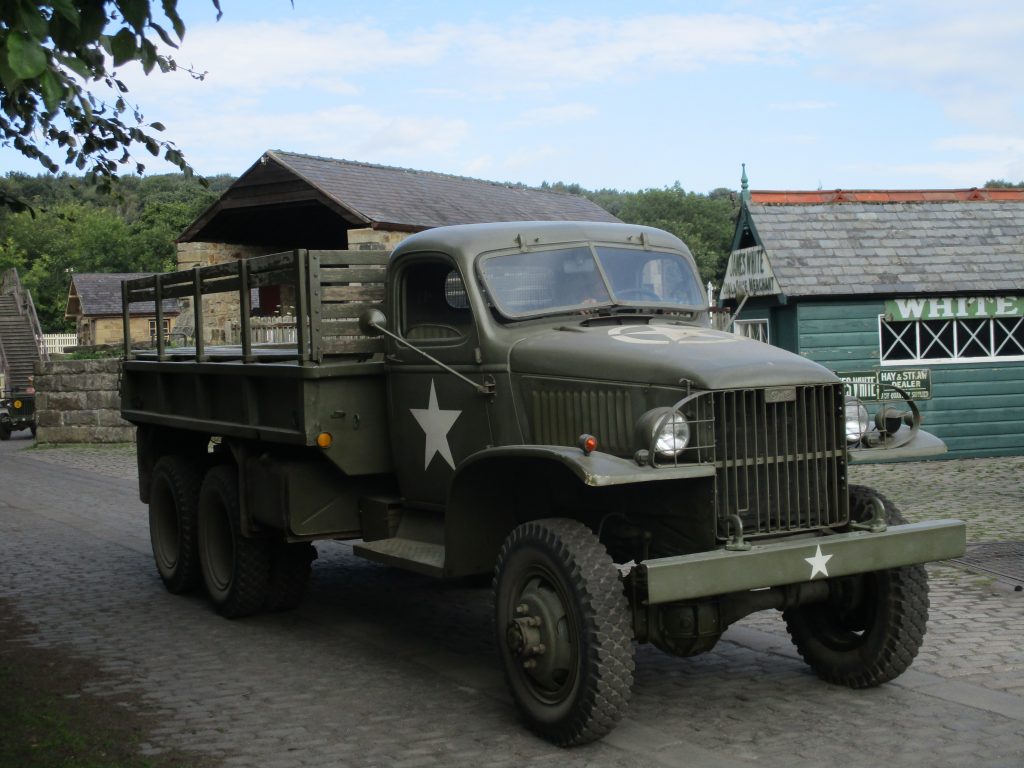







the posts are farther between this year but at least the excellent work everybody does can still be appreciated online by people like me that have little chance to see in person
Hi Sam. I’m glad that you find the blog useful in order to see something of the work we do here. Posts have become less frequent – largely due to pressure of time (and I try to avoid doing them at home in the evenings now!) – however, I hope that the content is still comprehensive and of interest as before… Best wishes, Paul
I’m imagining the Brampton ‘dandy’ in the company of the 1829 0-2-2 “Rocket” in Newcastle’s Discovery Museum – as “Rocket” is more or less in as withdrawn condition from the Brampton (Lord Carlisle’s) Railway. Missed by a whisker, however. “Rocket” is off to Manchester next week and the ‘dandy’ is’nt quite ready yet. Still, there could be a meeting of the pair in 2062(!) – celebrating “Rocket”s 200th year of preservation!